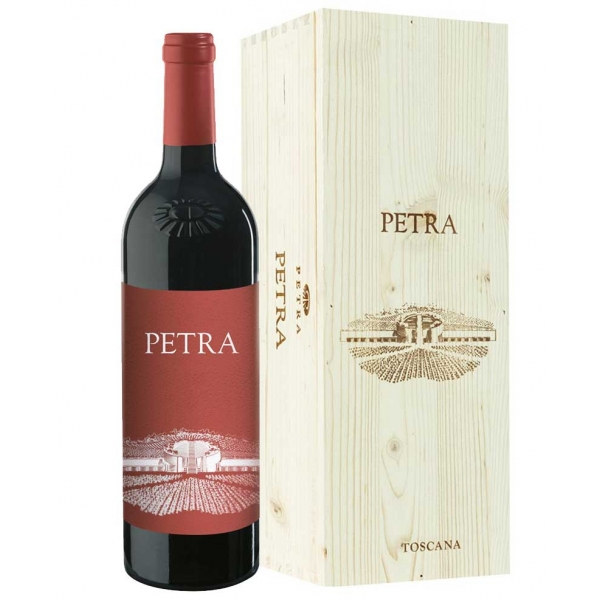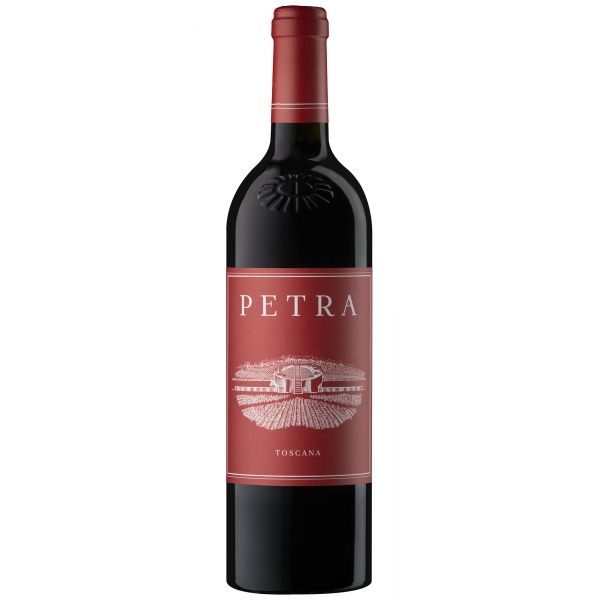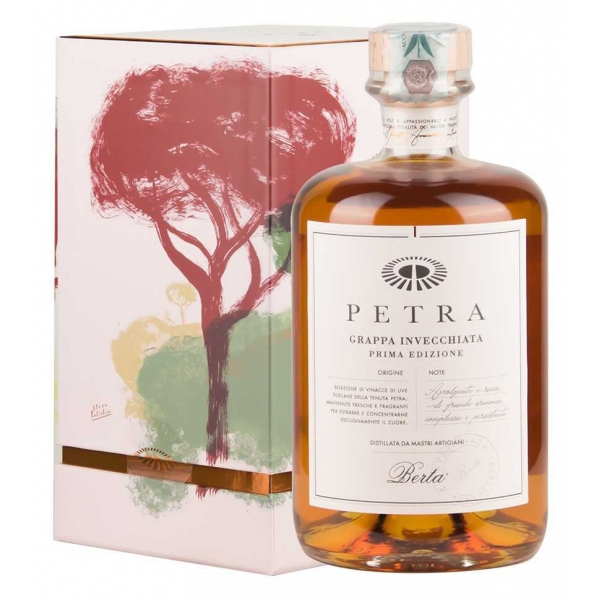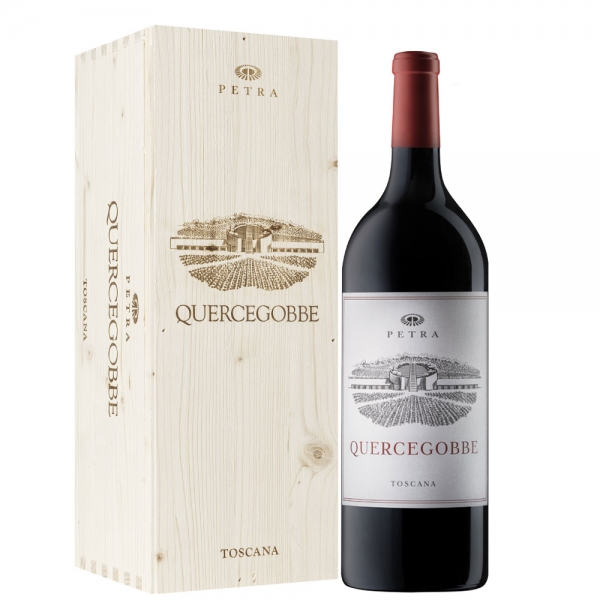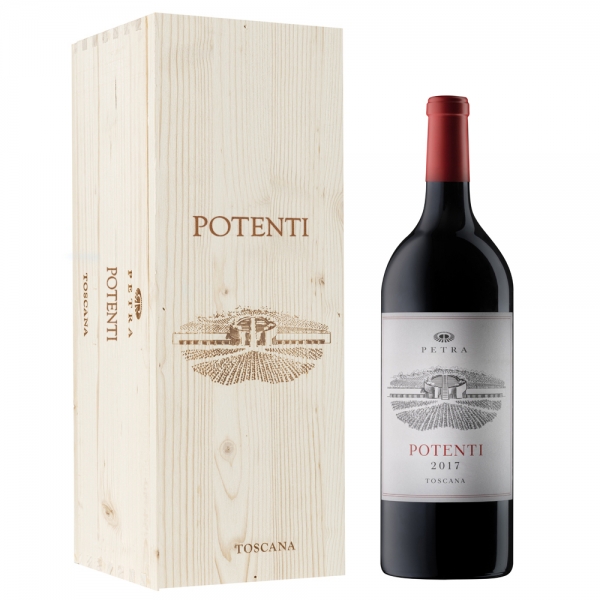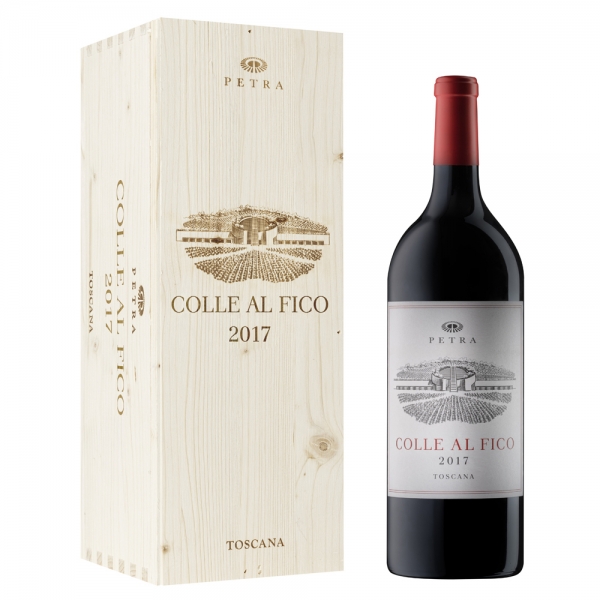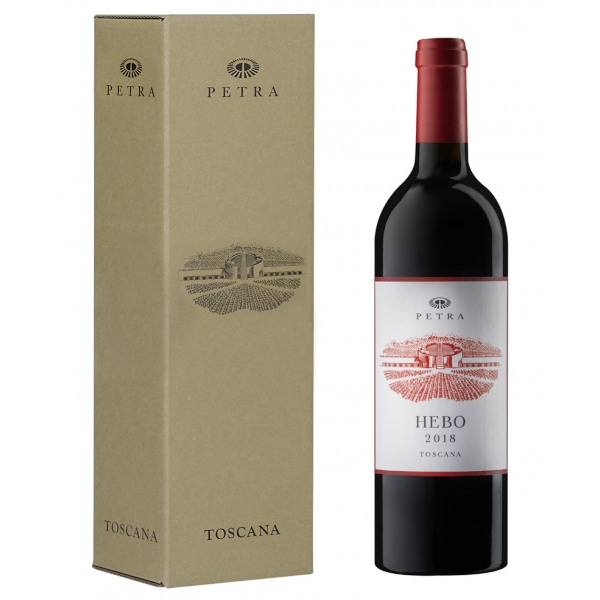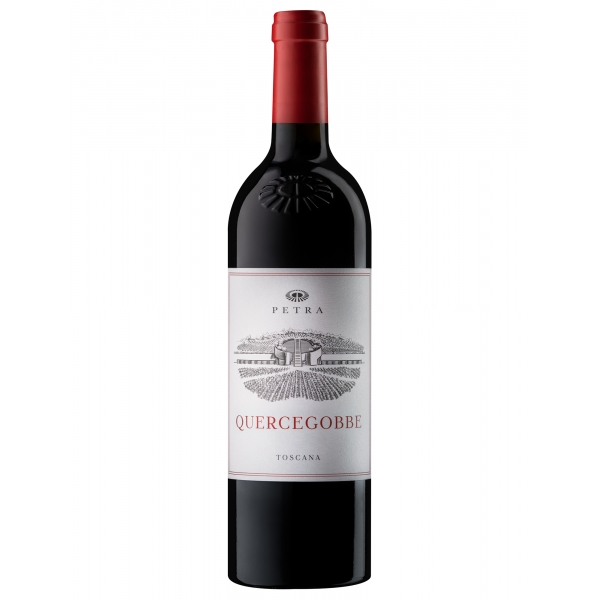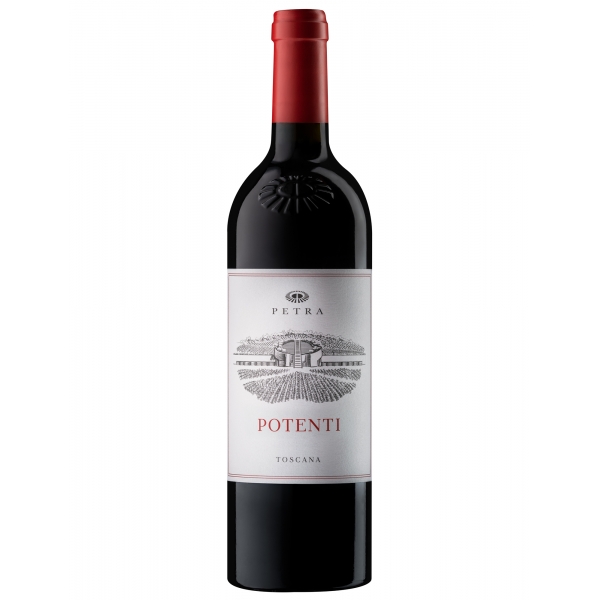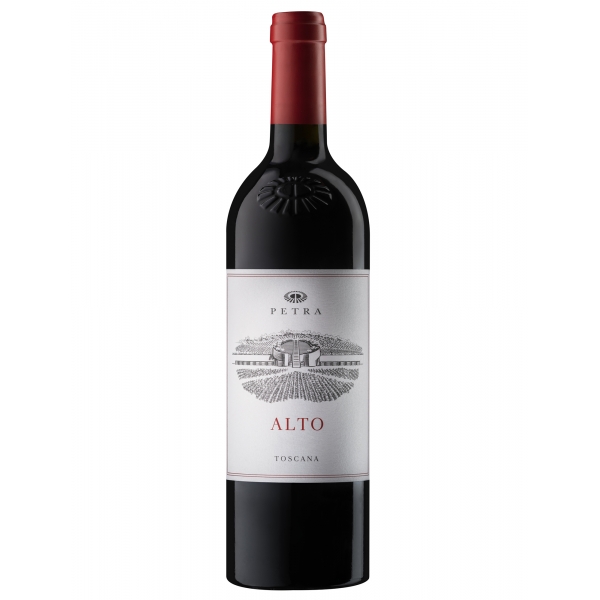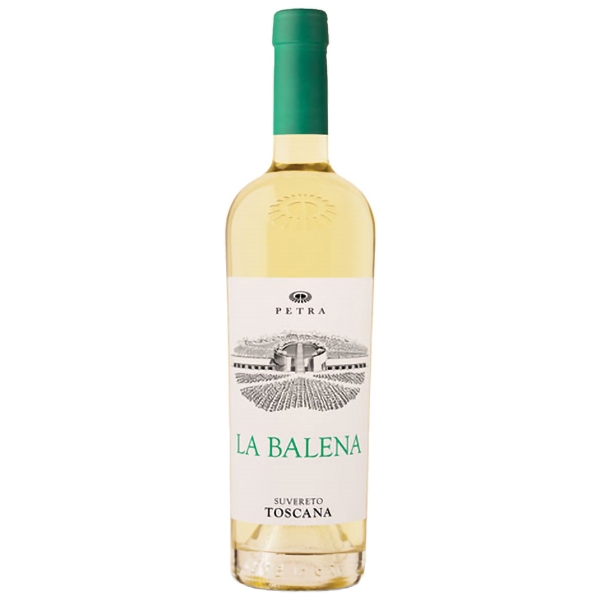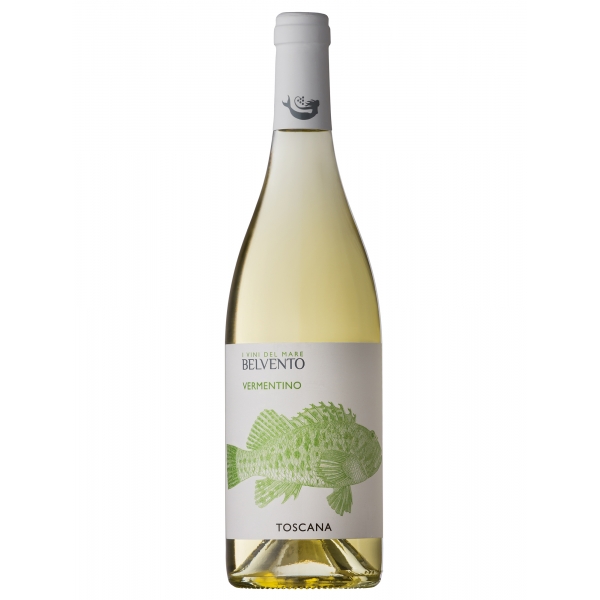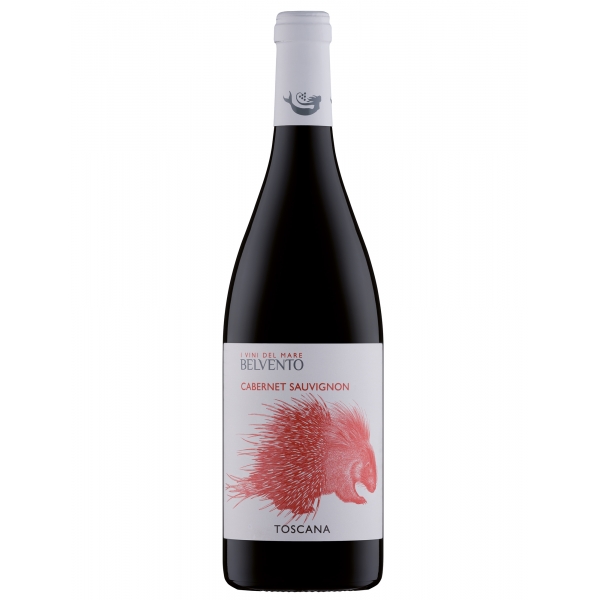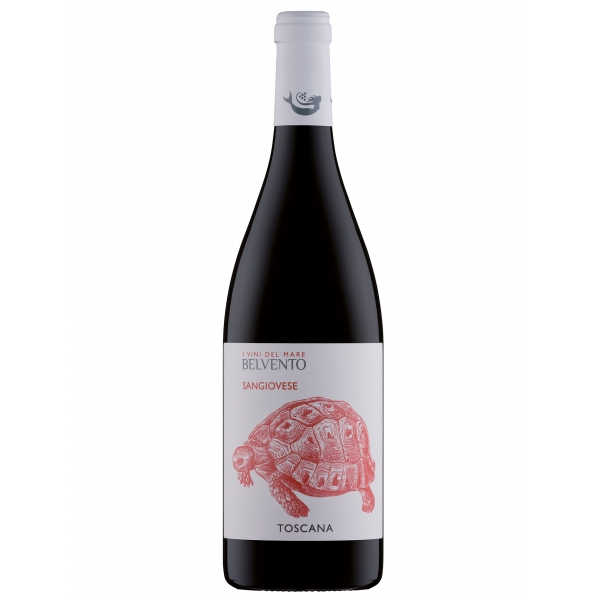No products
Categories
- Fashion Accessories
- Clothing
- Beauty & Lifestyle
-
Hi-Tech & Lifestyle
- Gaming
-
Case
- iPhone 11 Pro
- iPhone 11 Pro Max
- iPhone 11
- iPhone X / XS
- iPhone XS Max
- Samsung S10 / S10+ / S10e
- Huawei P30 / P30 Pro / P30 Lite
- Huawei P20 / P20 Pro / P20 Lite
- iPhone XR
- Samsung S9
- Samsung S9+
- iPhone 8 / 7
- iPhone 8 Plus / 7 Plus
- Samsung S8
- Samsung S8+
- Samsung S7
- Samsung S7 Edge
- iPhone 6 / 6 s
- iPhone 6 Plus / 6 s Plus
- iPhone 5 / SE
- Skin
- Audio
- Smart Home
- Drones & Hoverboard
- Photo & Video
- Desk Supplies
- Accessories
- Games
- Beverages
- Food
- Home
- Jewelry
- Luxury
- Travel
- Art
- Footwear
- Vintage Fashion
- Restaurants
- Sport
- Animals
- Gift Ideas
- Kidswear
Extra
Petra
The Wonderful Story of a Female Challenge
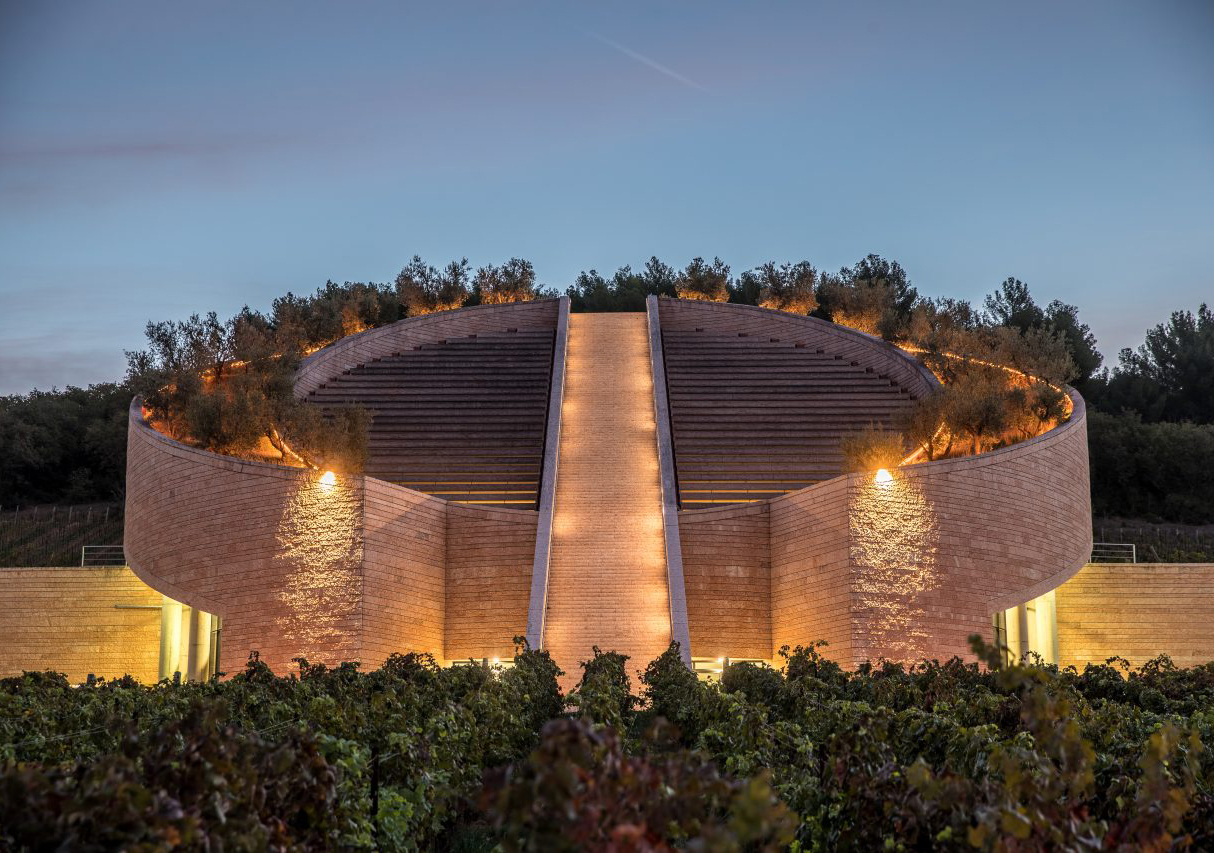
The Princess’ Vineyard and Gardens

The memory of nature has deep roots. Francesca Moretti was still at university when the first vine varietals were planted: she was the one who chose, on the basis of an already clear vision, what to grow on this terroir, extremely suitable but ready for a new reinterpretation, and her choice favoured international varieties, in addition to sangiovese and vermentino varieties, the start of a path which was already pointing to the highest levels of delightfulness and contemporaneity.
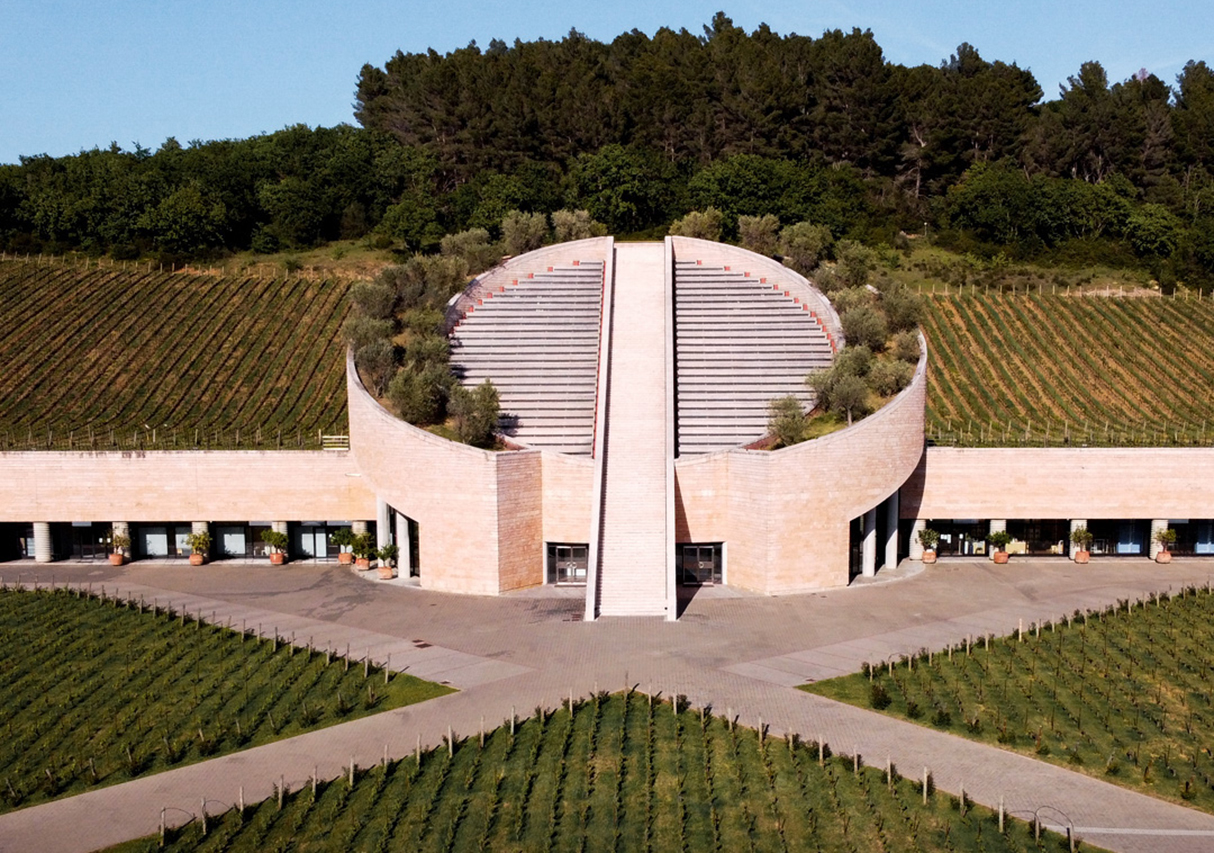
Two centuries earlier, Elisa Bonaparte, too, had planted cabernet-sauvignon and Merlot grapes in a 5-hectares plot which later became known as the Princess Vineyard. A circle that closes in our times, with the project that has been lovingly planned by Francesca, to recreate the historical Vineyard in the places that saw her grow up. The Princess Elisa’s Gardens is included in this, a collection of aromatic herbs which faithfully reproduces the original plan, on a panoramic terrace adjacent to the winery, according to the illustration of the historical botanist Paolo Tomei, from the University of Siena.
Our Maremma - A Natural Oasis
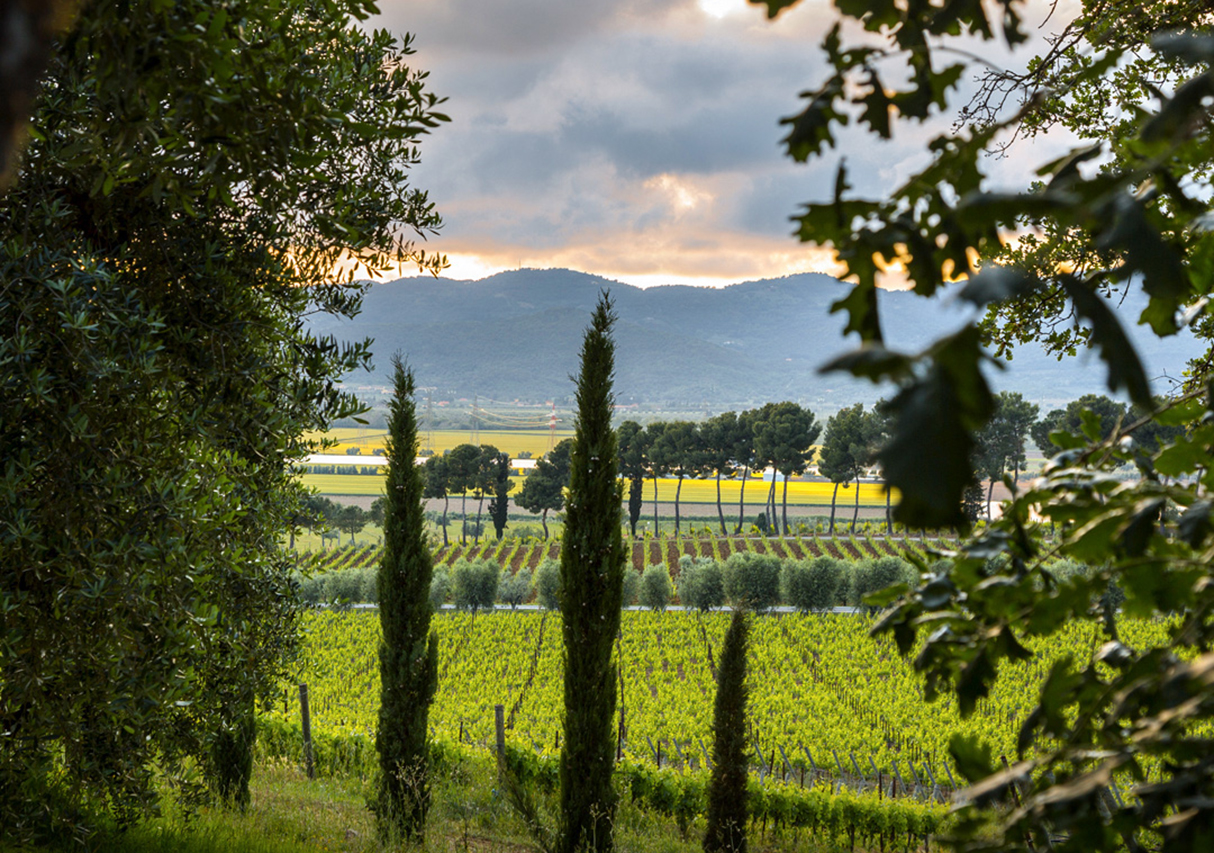
When someone arrives at Petra for the first time, they are enchanted by the power of nature and by a light that has an uncommon depth at these latitudes.
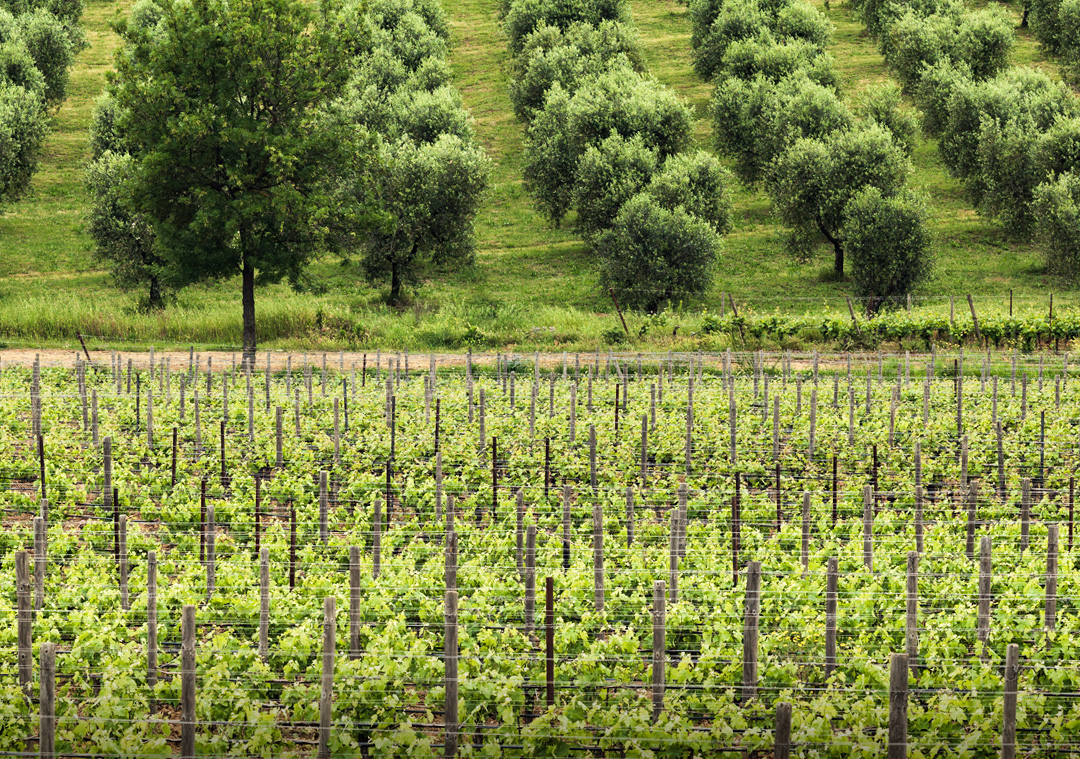
The estate is steeped in a very special ecosystem, which breathes and whispers, permeated by warmth and with an underground current which pervades the soil and reaches us through the produce of the land – grapes, but a lot more too.
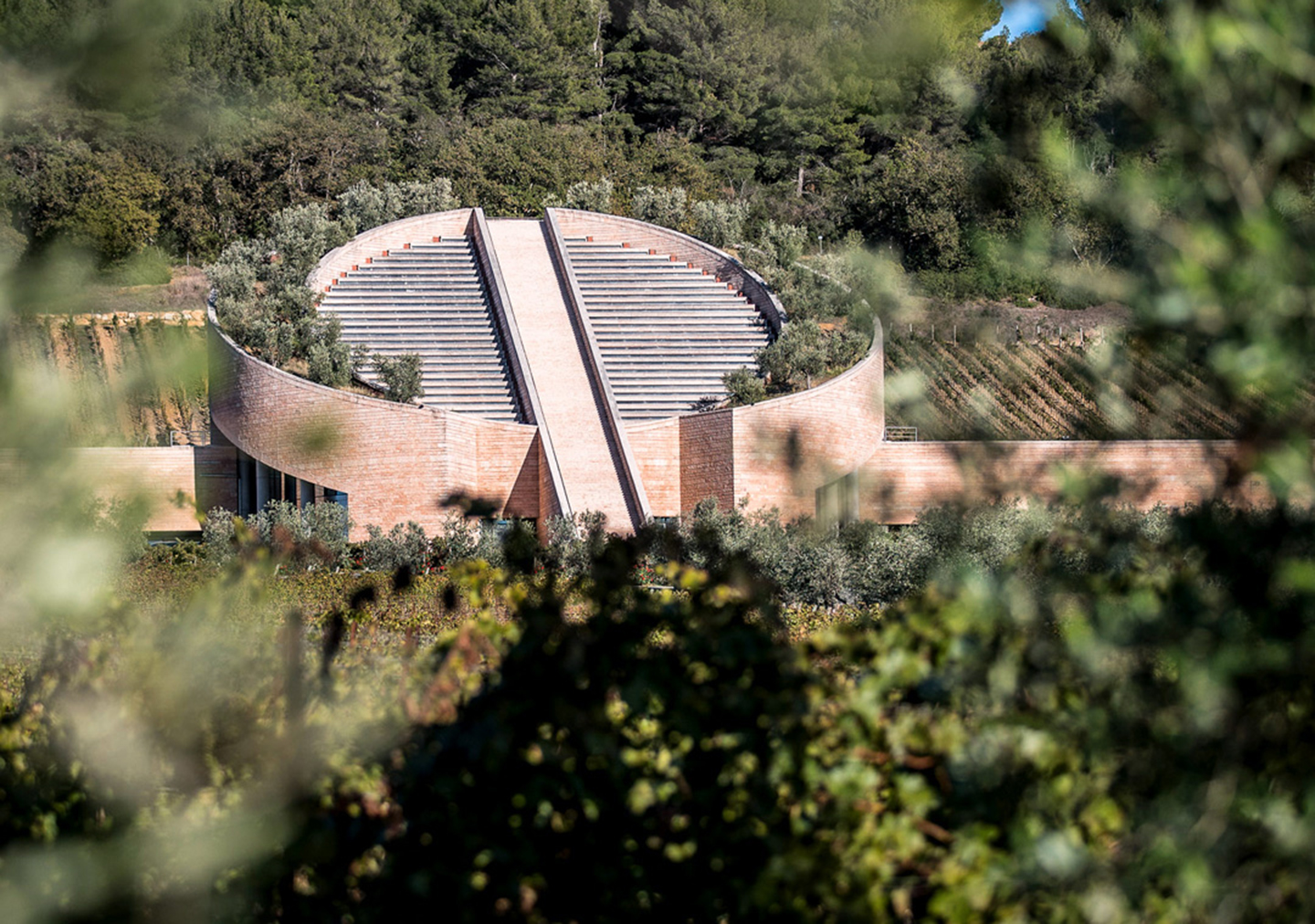
Petra’s landscape and nature are unique: the green belt of the Colline Metallifere, near the Montioni Natural Park, with the Poggio Tre Cancelli Natural Reserve, up to the Sterpaia Coastal Park, looking over the Tyrrhenian Sea, a constant presence on the horizon, a single blue tone in a landscape otherwise dominated by two essential colours – green and russet.
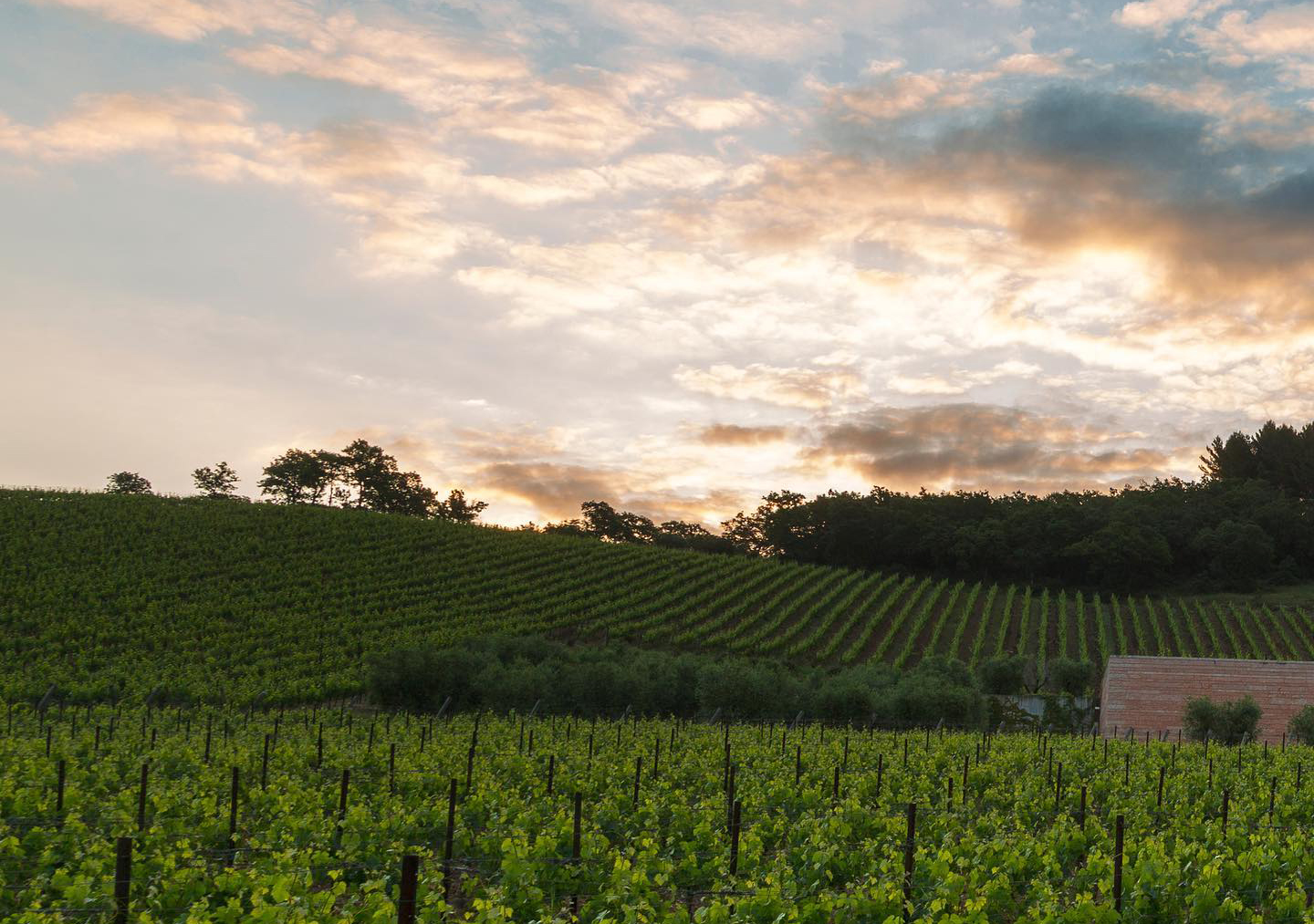
The hot summers are tempered by the brackish coastal winds, and the Mediterranean scrub, where Turkey oak, cork and arbutus mix with heather, mastic and myrtle, is home to deer, boars, porcupines, hedgehogs, badgers, foxes, kestrels, buzzards and owls. A cohesive coexistence and a spontaneous dialogue link Petra to its land, starting from the light environmental footprint of its winemaking and agricultural practices.
Terroir - A Multiplicity to Know and Valorize

A natural predisposition can be a limitation or an opportunity: the final result depends on its interpretation, on the people who work the land with devotion and competence to extract its essence. The area of Suvereto is rich of winemaking traditions which go back to the time of the Greeks and the Etruscans, who made wine in amphoras, and who carried out a prosperous metal trade here. But the land’s pedigree is not enough, especially when it is so nuanced: Petra is a collection of landscapes and microclimates, a series of substrates.
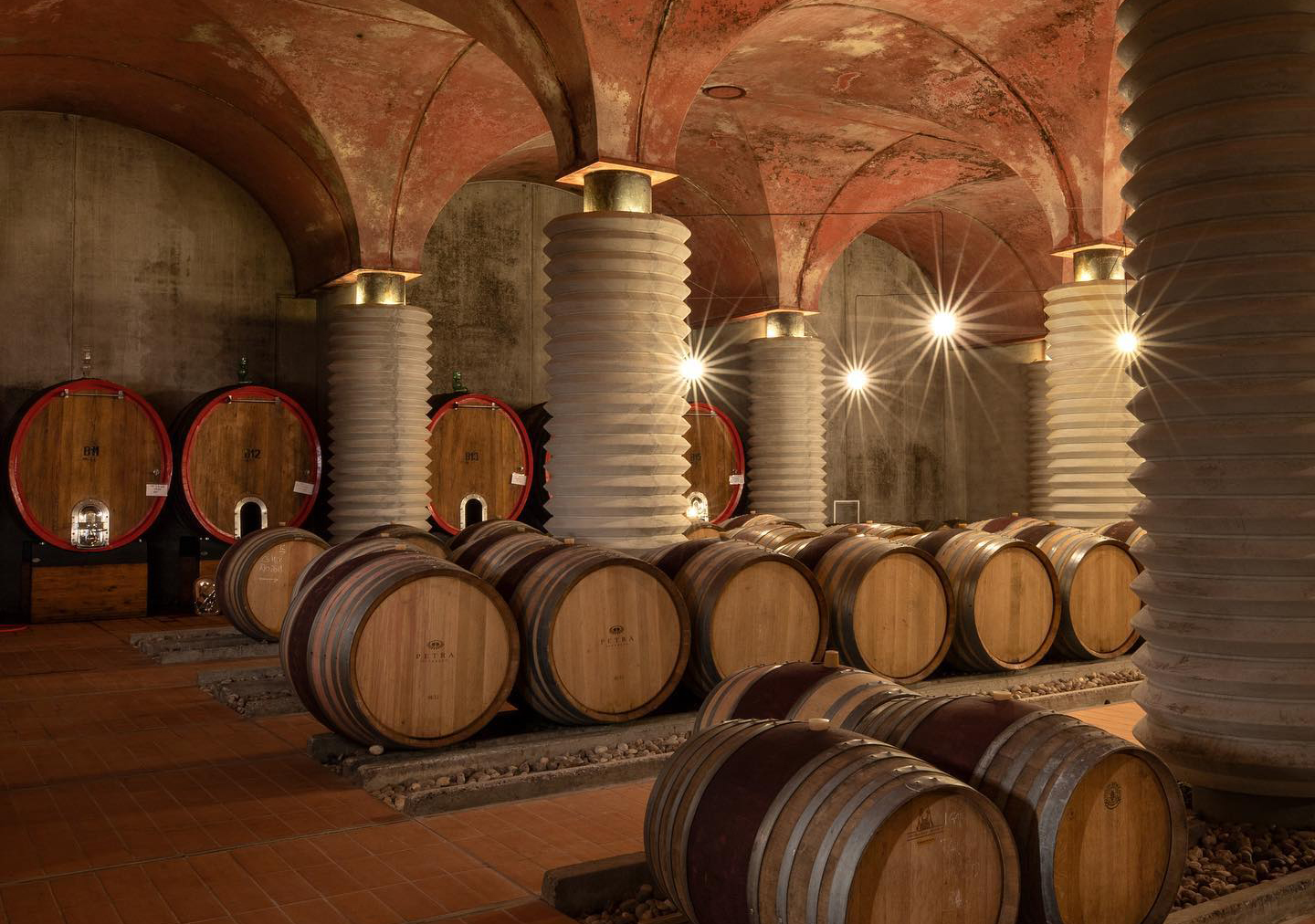
A first zoning process carried out by Attilio Scienza highlighted the presence of a superficial stony and dry layer of tectonic origins, followed by a layer rich in manganese and other metals, of alluvial origins, and a basal muddy layer. This study was followed by a detailed cartographic classification of the property, in cooperation with CREA in Florence: a wealth of essential scientific data to understand how best to express the vineyards’ potential.
Agricultural Company - Not a Soil But a Succession of Soils
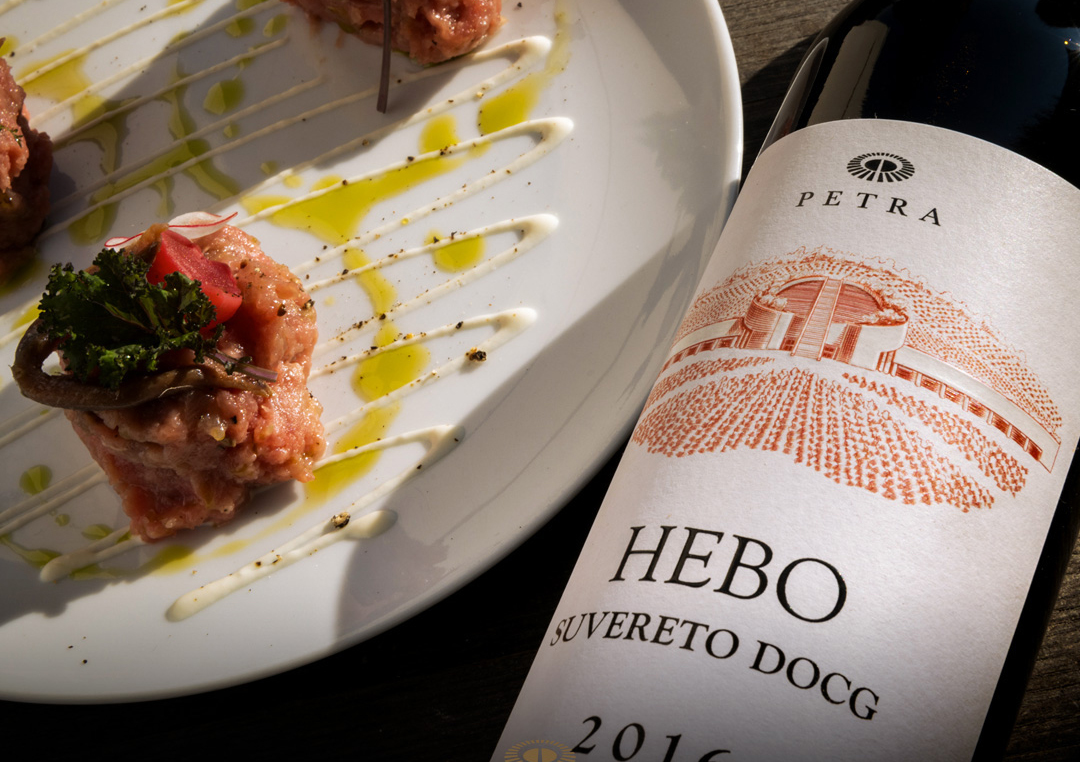
Francesca Moretti loves to sink her hands in the soil and also for this reason she wanted the estate to retain its original agricultural DNA intact. First of all, this is an agricultural company: here cultivation and breeding goes on, in the respect of biodiversity. Particular attention is paid to the safeguarding of ancient and threatened breeds and varieties, such as the black Valdarno, white Valdarnese and Livorno hens, which will shortly be joined by Cinta Senese and Grigio Toscano pigs, and Montecristo goats, the only example of goats living in the wild since ancient times and at risk of extinction, received in custody from the Tuscany region for the only purpose of safekeeping. A cheese production project is also being planned with a team from the University of Florence which follows a flock near Podere Flecetone, on the Amiata mountain. Cultivation of vegetables and wild salads for use in the kitchen will go hand in hand with the cultivation of ancient seeds, stored and exchanged within the Tuscan Cultivators network, of which Petra is a member. The winery restaurant celebrates hospitality and discovery, and is open by appointment for the tasting of typical local products, in combination with wines from the estate.
Wine Identity - Philosophy
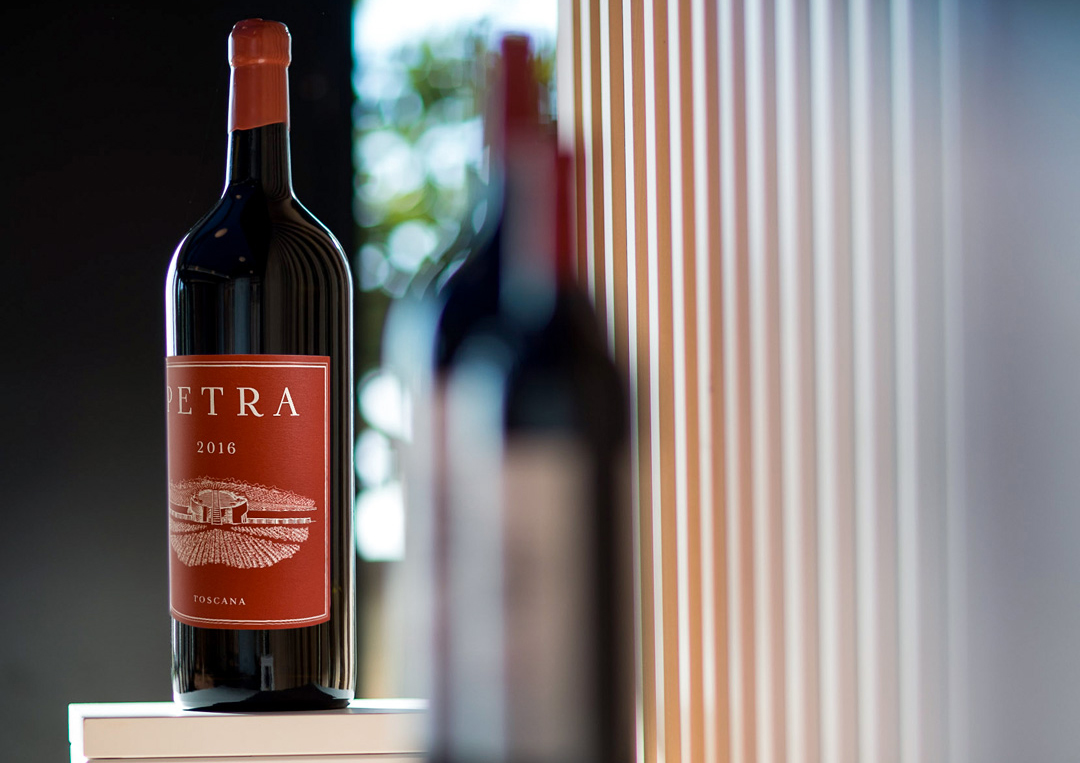
A strong protective instinct moves all those who live Petra, from Francesca Moretti to the men who work in the vineyard and in the olive groves. They protect the equilibrium of a natural system which demands respect and sensitivity to be enhanced and to return value and exhilaration.

The work, from the vine to the cellar, is therefore meticulous and non-invasive, agricultural practices follow an organic regime and the environmental impact, also in the winery activities, is reduced to a minimum. Consultancy by Marco Simonit followed the consultancy of the agronomist Ruggero Mazzilli, which set the path to organic conversion to the point of certification. Beppe Caviola curates the transformation of the grapes into wine without manipulations or forcing, exploiting gravity, natural light and the energy supplied by a floating solar panel system (which does not steal land from agriculture) to extract a contemporary and pleasant note, and distil the sometime luxurious warmth and splendid passion of this land in our wines. Expression of the natural imprint of the territory are also our oils, the result of pure and genuine passion for the olive tree.
Petra Wines - The Memory of The Past and The Force of Nature
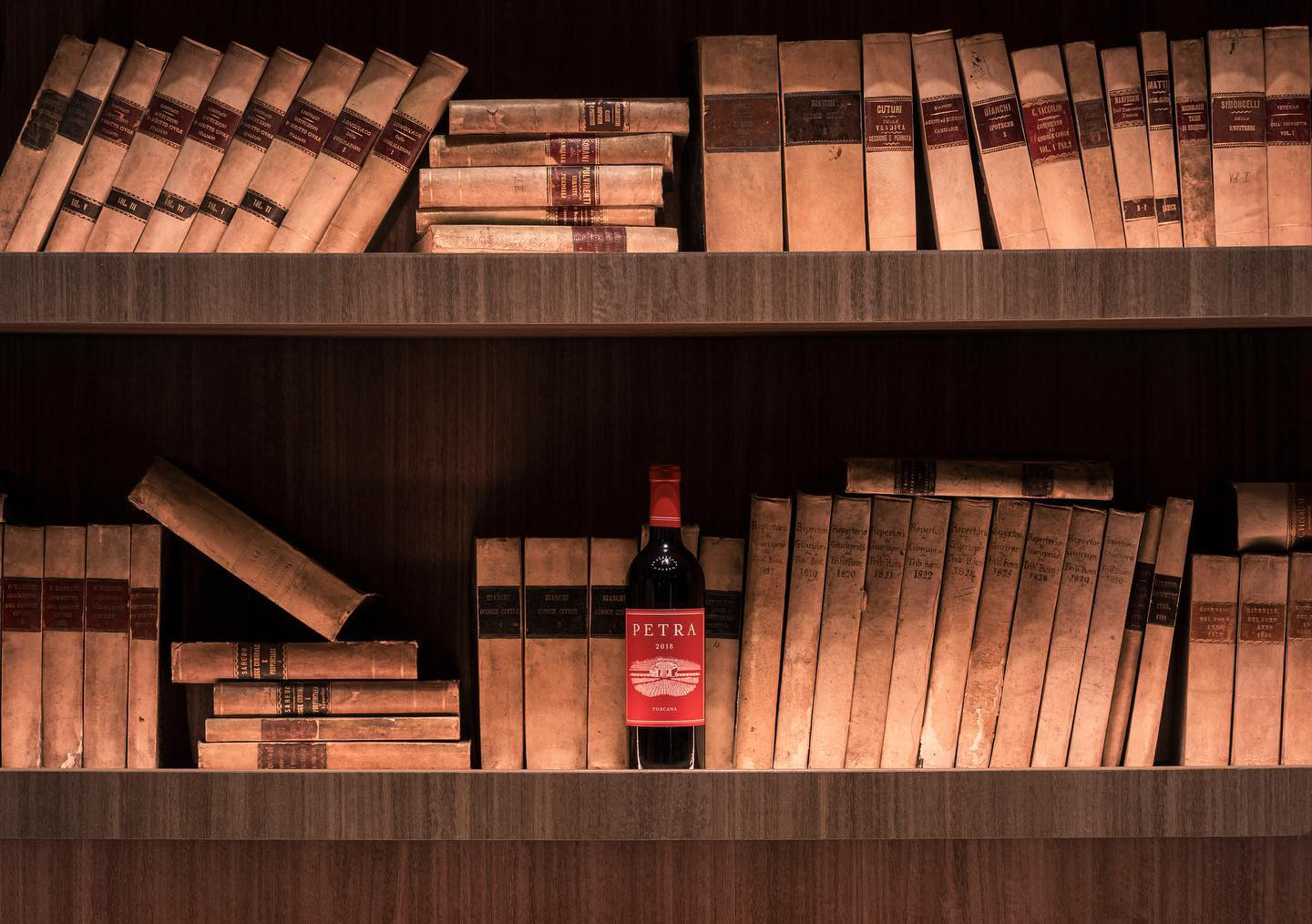
Near the ancient village of Suvereto, land of the suvere, majestic oaks produce cork on the iron hills of the Val di Cornia and with a glimpse of the Tyrrhenian Sea.
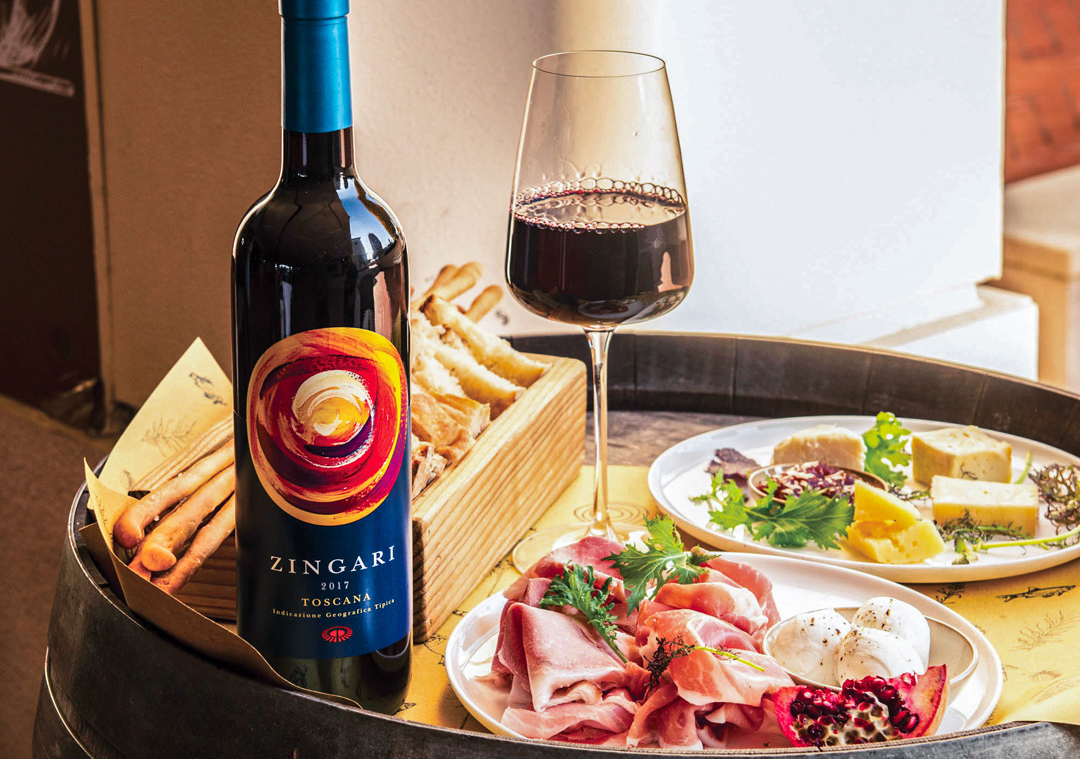
It’s here, in the spectacular nature of the Maremma, that the magic of Petra was born.
Belvento Wines - The Wind, The Sea, The Mediterranean Scrub

“I Vini del Mare” selection, a range inspired by the maritime identity and the wild nature of this particular area of Tuscany.
Cellar Model - Architecture
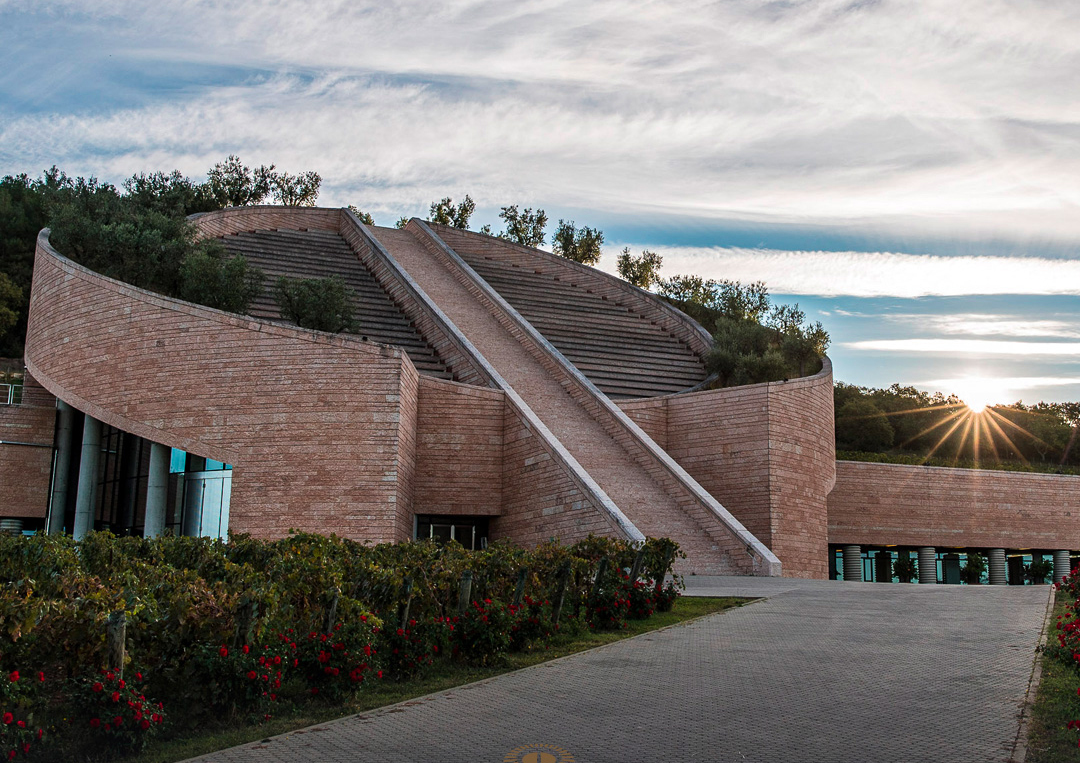
The Swiss architect Mario Botta, appointed by Vittorio Moretti to give shape and purpose to the operative heart of Petra, described in this way the spirit of the project.
.jpg)
A single frontage downstream, with a 25 m tall central cylindrical body and oriented 45/90 degrees with respect to the vine-rows around it. Totemic and organic, the symbol of a sensitive approach to a technological process, the cylinder includes the activities of reception and, at his heart, the winemaking activities. The roof – an inclined plane parallel to the hill – is the place where the grape clusters are gathered: from here the grapes, separated from the stem, fall softly into the maceration and fermentation tanks.

Soft, respectful, with a low impact, like the overall approach that leads from the grapes to the bottle. In the heart of the hill are the aging chambers (in casks and bottles) and, in addition to the space reserved to Slavonian oak barrels, a long gallery penetrates deeply and comes to an end in front of a solid rock wall.This is the final place, a space for meeting and reflecting, as the Rivadossi Altar suggests. An umbilical cord that links Petra to the petra mater of the Colline Metallifere.
Products Petra
Petra
The Wonderful Story of a Female Challenge

The Princess’ Vineyard and Gardens

The memory of nature has deep roots. Francesca Moretti was still at university when the first vine varietals were planted: she was the one who chose, on the basis of an already clear vision, what to grow on this terroir, extremely suitable but ready for a new reinterpretation, and her choice favoured international varieties, in addition to sangiovese and vermentino varieties, the start of a path which was already pointing to the highest levels of delightfulness and contemporaneity.

Two centuries earlier, Elisa Bonaparte, too, had planted cabernet-sauvignon and Merlot grapes in a 5-hectares plot which later became known as the Princess Vineyard. A circle that closes in our times, with the project that has been lovingly planned by Francesca, to recreate the historical Vineyard in the places that saw her grow up. The Princess Elisa’s Gardens is included in this, a collection of aromatic herbs which faithfully reproduces the original plan, on a panoramic terrace adjacent to the winery, according to the illustration of the historical botanist Paolo Tomei, from the University of Siena.
Our Maremma - A Natural Oasis

When someone arrives at Petra for the first time, they are enchanted by the power of nature and by a light that has an uncommon depth at these latitudes.

The estate is steeped in a very special ecosystem, which breathes and whispers, permeated by warmth and with an underground current which pervades the soil and reaches us through the produce of the land – grapes, but a lot more too.

Petra’s landscape and nature are unique: the green belt of the Colline Metallifere, near the Montioni Natural Park, with the Poggio Tre Cancelli Natural Reserve, up to the Sterpaia Coastal Park, looking over the Tyrrhenian Sea, a constant presence on the horizon, a single blue tone in a landscape otherwise dominated by two essential colours – green and russet.

The hot summers are tempered by the brackish coastal winds, and the Mediterranean scrub, where Turkey oak, cork and arbutus mix with heather, mastic and myrtle, is home to deer, boars, porcupines, hedgehogs, badgers, foxes, kestrels, buzzards and owls. A cohesive coexistence and a spontaneous dialogue link Petra to its land, starting from the light environmental footprint of its winemaking and agricultural practices.
Terroir - A Multiplicity to Know and Valorize

A natural predisposition can be a limitation or an opportunity: the final result depends on its interpretation, on the people who work the land with devotion and competence to extract its essence. The area of Suvereto is rich of winemaking traditions which go back to the time of the Greeks and the Etruscans, who made wine in amphoras, and who carried out a prosperous metal trade here. But the land’s pedigree is not enough, especially when it is so nuanced: Petra is a collection of landscapes and microclimates, a series of substrates.

A first zoning process carried out by Attilio Scienza highlighted the presence of a superficial stony and dry layer of tectonic origins, followed by a layer rich in manganese and other metals, of alluvial origins, and a basal muddy layer. This study was followed by a detailed cartographic classification of the property, in cooperation with CREA in Florence: a wealth of essential scientific data to understand how best to express the vineyards’ potential.
Agricultural Company - Not a Soil But a Succession of Soils

Francesca Moretti loves to sink her hands in the soil and also for this reason she wanted the estate to retain its original agricultural DNA intact. First of all, this is an agricultural company: here cultivation and breeding goes on, in the respect of biodiversity. Particular attention is paid to the safeguarding of ancient and threatened breeds and varieties, such as the black Valdarno, white Valdarnese and Livorno hens, which will shortly be joined by Cinta Senese and Grigio Toscano pigs, and Montecristo goats, the only example of goats living in the wild since ancient times and at risk of extinction, received in custody from the Tuscany region for the only purpose of safekeeping. A cheese production project is also being planned with a team from the University of Florence which follows a flock near Podere Flecetone, on the Amiata mountain. Cultivation of vegetables and wild salads for use in the kitchen will go hand in hand with the cultivation of ancient seeds, stored and exchanged within the Tuscan Cultivators network, of which Petra is a member. The winery restaurant celebrates hospitality and discovery, and is open by appointment for the tasting of typical local products, in combination with wines from the estate.
Wine Identity - Philosophy

A strong protective instinct moves all those who live Petra, from Francesca Moretti to the men who work in the vineyard and in the olive groves. They protect the equilibrium of a natural system which demands respect and sensitivity to be enhanced and to return value and exhilaration.

The work, from the vine to the cellar, is therefore meticulous and non-invasive, agricultural practices follow an organic regime and the environmental impact, also in the winery activities, is reduced to a minimum. Consultancy by Marco Simonit followed the consultancy of the agronomist Ruggero Mazzilli, which set the path to organic conversion to the point of certification. Beppe Caviola curates the transformation of the grapes into wine without manipulations or forcing, exploiting gravity, natural light and the energy supplied by a floating solar panel system (which does not steal land from agriculture) to extract a contemporary and pleasant note, and distil the sometime luxurious warmth and splendid passion of this land in our wines. Expression of the natural imprint of the territory are also our oils, the result of pure and genuine passion for the olive tree.
Petra Wines - The Memory of The Past and The Force of Nature

Near the ancient village of Suvereto, land of the suvere, majestic oaks produce cork on the iron hills of the Val di Cornia and with a glimpse of the Tyrrhenian Sea.

It’s here, in the spectacular nature of the Maremma, that the magic of Petra was born.
Belvento Wines - The Wind, The Sea, The Mediterranean Scrub

“I Vini del Mare” selection, a range inspired by the maritime identity and the wild nature of this particular area of Tuscany.
Cellar Model - Architecture

The Swiss architect Mario Botta, appointed by Vittorio Moretti to give shape and purpose to the operative heart of Petra, described in this way the spirit of the project.
.jpg)
A single frontage downstream, with a 25 m tall central cylindrical body and oriented 45/90 degrees with respect to the vine-rows around it. Totemic and organic, the symbol of a sensitive approach to a technological process, the cylinder includes the activities of reception and, at his heart, the winemaking activities. The roof – an inclined plane parallel to the hill – is the place where the grape clusters are gathered: from here the grapes, separated from the stem, fall softly into the maceration and fermentation tanks.

Soft, respectful, with a low impact, like the overall approach that leads from the grapes to the bottle. In the heart of the hill are the aging chambers (in casks and bottles) and, in addition to the space reserved to Slavonian oak barrels, a long gallery penetrates deeply and comes to an end in front of a solid rock wall.This is the final place, a space for meeting and reflecting, as the Rivadossi Altar suggests. An umbilical cord that links Petra to the petra mater of the Colline Metallifere.
Products Petra
- 1
- 2
-
Petra - Petra - D.O.C.G. - Magnum - Wooden Box - Red Wines - Luxury Limited...
Symbol of the project itself, so much so that it bears its name, Petra tells ancient stories with new words. Cabernet Sauvignon and Merlot grapes are harvested manually on soils chosen to enhance the characteristics of the vine and bring out its distinctive features. The same happens for cabernet franc, introduced in 2018, a variety that has found fertile...
120,00 € -
Petra - Petra - D.O.C.G. - Wooden Box - Red Wines - Luxury Limited Edition -...
Symbol of the project itself, so much so that it bears its name, Petra tells ancient stories with new words. Cabernet Sauvignon and Merlot grapes are harvested manually on soils chosen to enhance the characteristics of the vine and bring out its distinctive features. The same happens for cabernet franc, introduced in 2018, a variety that has found fertile...
48,00 € -
Petra - Petra - D.O.C.G. - Red Wines - Luxury Limited Edition - 750 ml
Symbol of the project itself, so much so that it bears its name, Petra tells ancient stories with new words. Cabernet Sauvignon and Merlot grapes are harvested manually on soils chosen to enhance the characteristics of the vine and bring out its distinctive features. The same happens for cabernet franc, introduced in 2018, a variety that has found fertile...
43,50 € -
Petra - Grappa Aged Petra - First Edition - Spirits and Distillates - Luxury...
A selection of Tuscan grape marc kept fresh and fragrant to extract and concentrate exclusively the heart. A journey, from Tuscany to Piedmont, a raw material that does not exhaust its strength in wine, but returns to live in French oak stills and barriques.
44,90 € -
Petra - Quercegobbe - D.O.C.G. - Magnum - Wooden Box - Red Wines - Luxury...
A real cru from which the Merlot grapes with which the wine is produced come. Quercegobbe is located in an ideal position, on the edge of the Mediterranean maquis but close to the cellar, on a well-ventilated hill overlooking the sea.
49,00 € -
Petra - Potenti - D.O.C.G. - Magnum - Wooden Box - Red Wines - Luxury Limited...
The vineyard from which the Cabernet Sauvignon grapes come from benefits from the balanced relationship between the clay component and the skeleton, as well as from the good slope of the soil.
42,50 € -
Petra - Colle al Fico - D.O.C.G. - Magnum - Wooden Box - Red Wines - Luxury...
Colle al Fico is one of the best crus of the company and takes its name from the toponym of the vineyard from which the syrah grapes with which it is produced come. The soil on which the rows rest is calcareous clay, well ventilated by the sea breeze.
49,00 € -
Petra - Alto - D.O.C.G. - Magnum - Wooden Box - Red Wines - Luxury Limited...
Alto represents one of the most marked expressions of the territory. Its geological and microclimatic characteristics are clearly expressed through a grape variety, Sangiovese, which has its chosen homeland in Tuscany.
44,50 € -
Petra - Hebo - D.O.C.G. - Magnum - Gift Box - Red Wines - Luxury Limited...
Name of an Etruscan settlement of very ancient origin, Hebo refers to the historical roots of Suvereto. It is produced with a classic blend of cabernet sauvignon, merlot and sangiovese, vines introduced in the area by Elisa Bonaparte Baciocchi, princess of Piombino since 1805 and enlightened woman of wine.
31,20 € -
Petra - Quercegobbe - D.O.C.G. - Red Wines - Luxury Limited Edition - 750 ml
A real cru from which the Merlot grapes with which the wine is produced come. Quercegobbe is located in an ideal position, on the edge of the Mediterranean maquis but close to the cellar, on a well-ventilated hill overlooking the sea.
21,50 € -
Petra - Potenti - D.O.C.G. - Red Wines - Luxury Limited Edition - 750 ml
The vineyard from which the Cabernet Sauvignon grapes come from benefits from the balanced relationship between the clay component and the skeleton, as well as from the good slope of the soil.
21,50 € -
Petra - Colle al Fico - D.O.C.G. - Red Wines - Luxury Limited Edition - 750 ml
Colle al Fico is one of the best crus of the company and takes its name from the toponym of the vineyard from which the syrah grapes with which it is produced come. The soil on which the rows rest is calcareous clay, well ventilated by the sea breeze.
21,50 € -
Petra - Alto - D.O.C.G. - Red Wines - Luxury Limited Edition - 750 ml
Alto represents one of the most marked expressions of the territory. Its geological and microclimatic characteristics are clearly expressed through a grape variety, Sangiovese, which has its chosen homeland in Tuscany.
21,50 € -
Petra - Hebo - D.O.C.G. - Red Wines - Luxury Limited Edition - 750 ml
Name of an Etruscan settlement of very ancient origin, Hebo refers to the historical roots of Suvereto. It is produced with a classic blend of cabernet sauvignon, merlot and sangiovese, vines introduced in the area by Elisa Bonaparte Baciocchi, princess of Piombino since 1805 and enlightened woman of wine.
12,20 € -
Petra - La Balena - I.G.T. - White Wines - Luxury Limited Edition - 750 ml
The name of the wine comes from an ancient oral tradition that identifies the toponym of the vineyard from which it comes. The sandy, slightly calcareous agrillo soils are cultivated with viognier.
12,20 € -
Petra Belvento - Vermentino - D.O.C.G. - White Wines - Luxury Limited Edition...
A Vermentino vinified in purity, to enhance the soft and fruity nature typical of this vine. Here, in the Tuscan Maremma, it has been able to express distinctive and unique characteristics, typical of a land tempered by long summers and softened by the fresh sea breezes that come from the Tyrrhenian Sea.
10,90 € -
Petra Belvento - Viognier - D.O.C.G. - White Wines - Luxury Limited Edition -...
In this part of the Tuscan Maremma the viognier can express itself at its best thanks to the minerality of the soils that have compact, calcareous and uniform banks. The wind and the heat of this land allow the ideal ripening of the berries which are small in thickness and crunchy.
10,90 € -
Petra Belvento - Ansonica - D.O.C.G. - White Wines - Luxury Limited Edition -...
Ansonica, already known in Sicily as inzolia, is one of the oldest native vines in Sicily and from here it would have arrived on the Tuscan coast and its archipelago by Greek merchant ships. Anxonica benefits from hot and dry climates that allow this late vine to reach full ripeness, characterized by large and thick-skinned berries, to give dry and dry...
10,90 € -
Petra Belvento - Velarosa - D.O.C.G. - Rosé Wines - Luxury Limited Edition -...
Grenache: the fourth most cultivated grape in the world. A vine that in Maremma, a sunny and windy land, reaches the ideal ripeness for the production of full-bodied, savory rosé wines with great aromatic complexity.
10,90 € -
Petra Belvento - Cabernet Sauvignon - D.O.C.G. - Red Wines - Luxury Limited...
Tuscany is the elective homeland of cabernet sauvignon and the northern Tuscan Maremma is one of the most suitable areas for its cultivation. The “Belvento: I Vini del Mare” selection is born in this strip of land, squeezed between the sea and the hills.
10,90 € -
Petra Belvento - Sangiovese - D.O.C.G. - Red Wines - Luxury Limited Edition -...
The Sangiovese grape has very ancient origins. As such it has been known since 1500, but its genesis is probably much more remote and dates back to the first settlements of the Etruscans and Romans who cultivated vines here, tearing fertile land from the marshes and passing on the culture of wine up to the days our. Sangiovese is a vigorous vine in this...
10,90 €
- 1
- 2




